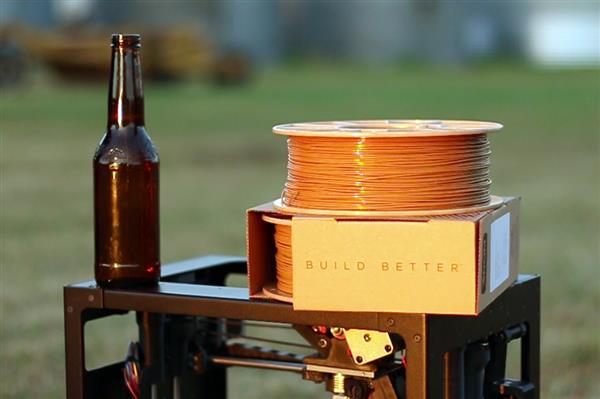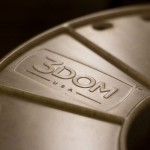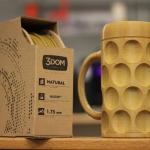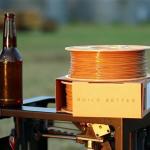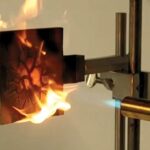A 3D printing company, 3Dom USA, released a brand new earth-friendly 3D printing filament that’s actually made from beer. More specifically, the material is made using waste byproducts from the beer brewing process. It was reported that in 2006, 2,58 billion liters of beer were produced by Heineken alone, which each batch producing a host of solid wastes including spent grains, trub (wort and hop particles), yeast and others. Rather than seeing that end up in a landfill, 3Dom wants you to use it for your next 3D printing project. “We get the byproduct form a local major brewing plant. It’s stuff that would otherwise just be placed in a landfill,” said CEO Jake Clark in a press release. “We specifically look to make useful supposedly unusual material.”
Cheekily named Buzzed the filament is compatible with any 3D printer capable of printing with PLA. Though it doesn’t actually smell (nor, we expect, taste) like beer, it does provide visible grain fragments and a warm, natural color gradient on finished products. In keeping with their bio-conscious commitment, 3Dom packages Buzzed on 100% bio-based Eco-Spools, vacuum-sealed to keep out moisture.
Buzzed is the second offering in a line of bio-based 3D printing filaments by 3Dom, the first of which was Wound Up, a 3D material made from coffee waste that offered a rich, dark brown hue and natural coffee scent. Both products were created in collaboration with fellow Fargo, North Dakota company c2renew, which uses proprietary bio-composite formulations to design materials, compounds and parts that satisfy demanding engineering specifications. To continue the ongoing trend of advanced 3D printing materials, 3Dom also recently released their new engineering-grade Glass-Filled PLA 3D printing filament, the first of its kind.
3Dom and c2renew have promised that Buzzed and Wound Up are just the first of a line of bio-composite 3D printing materials, and we hope to see more great, Earth-friendly products like this in the near future.
3D printing is already a much more sustainable process than many traditional manufacturing methods, as it allows for small-batch runs and reduces material waste. However, a product that not only reduces waste, but actually recycles materials that would otherwise end up in a landfill? We’ll drink to that.


